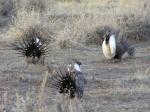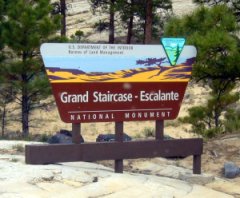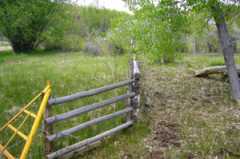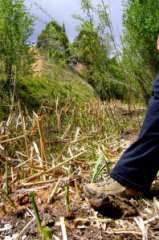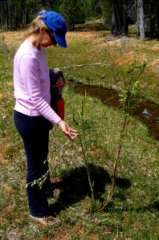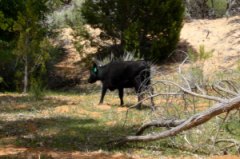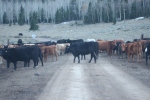 The BLM has got its tit in a wringer. From an environmental standpoint the BLM is a classic captured agency run locally both by and for ranchers. The agency has long overlooked grazing permit infractions of all sorts. Often outside nongovernmental organizations have to sue to win enforcement of standing laws and regulations. The BLM’s action of enforcement has been so lax that when they do try to enforce a decades old egregious and blatant defiance of U.S. law and multiple court orders, like the unanswered defiance by Cliven Bundy, they are unable to do so. Which opens more than one door in a good news – bad news sort of way.
The BLM has got its tit in a wringer. From an environmental standpoint the BLM is a classic captured agency run locally both by and for ranchers. The agency has long overlooked grazing permit infractions of all sorts. Often outside nongovernmental organizations have to sue to win enforcement of standing laws and regulations. The BLM’s action of enforcement has been so lax that when they do try to enforce a decades old egregious and blatant defiance of U.S. law and multiple court orders, like the unanswered defiance by Cliven Bundy, they are unable to do so. Which opens more than one door in a good news – bad news sort of way.
That bad news is that the government is inviting anarchy. If one guy, like Cliven Bundy with his delusions of grandeur, can defy the government by going loud with right wing media and inviting a bunch of gun toting friends to gather around, why can’t everyone start making up their own laws? Already Utah San Juan County Commissioner Phil Lyman is rallying a group to flout federal law and ride their ATV’s into a closed canyon next month. Presumably they will take notes from Bundy and bring their guns. Mike Noel, a Utah legislator, did the same in Paria Canyon in 2012 with no repercussions. Yet when environmental activist Tim DeChristopher practiced civil disobedience by waving a bid paddle at what turned out to be an energy auction held illegally by the BLM, he was promptly sentenced to two years in federal prison. Utah’s federal judge Dee Benson did not allow DeChristopher’s motives to be discussed in court, only whether or not he technically broke the law. “Equal Justice Under Law” is engraved on the front of the U.S. Supreme Court building. When special interest groups like livestock and energy producers or rural county commissioners on ATVs can crony up with the federal courts and agencies to manage legal outcomes, we are knocking on the door of fascism.
The good news for the BLM’s tit is that Cliven Bundy appears to be a lunatic to the vast majority of rational Americans. All the media attention on public land grazing abuse will shine some light on BLM practices and might encourage the agency to toe the line and regularly enforce existing regulations. This attention can open the door to a little public awareness to the otherwise boring issue of public land management, particularly the damage done by livestock grazing and the irony that this grazing would largely come to and end if it were not subsidized and/or if ranchers were permitted to sell and thereby retire their permits.
It will be up to non-governmental organizations and writers alike to go through the good news door. I’ll see what we can do at Torrey House Press with some appropriate Green Shorts.

